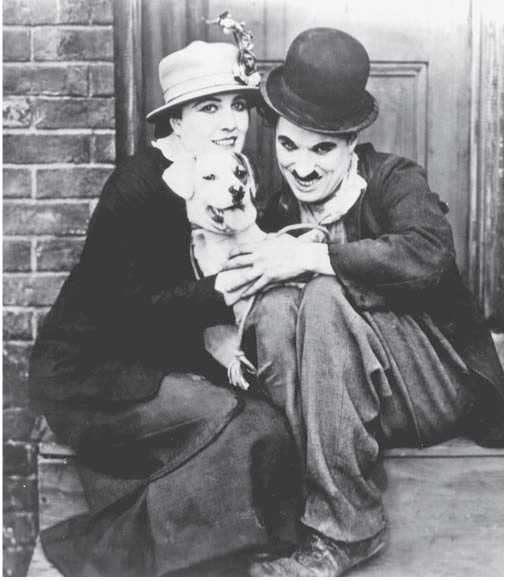The emergence of the motion picture industry was one of the most important social, cultural, and economic developments of the early 20th century. It helped to define and mold social values and norms. It assisted in the homogenization of American culture, and it provided accessible and affordable entertainment to the general public. In contrast with European film, which was viewed as an elite art form, movies in America were geared toward a mass audience.
When movies first emerged as a form of entertainment, they were hampered by limitations in technology. The most significant limitation was the inability to successfully integrate sound into moving pictures. It had a democratizing effect on the population. Language barriers, which often hampered immigrants’ ability to fully enjoy English-language theater, were not a factor for silent films. Immigrants unable to speak or understand English were able to enjoy the comedy of Charlie Chaplin and the tragic genius of Rudolph Valentino and Greta Garbo.
Movies did not emerge overnight. The movie camera was developed in the late 19th century. Thomas Edison Laboratories created the first successful camera in 1889. Five years later, Edison’s technicians perfected the Kinetoscope, a large wooden box with a peephole at the top through which customers could view the pictures. Edison, however, did not take adequate steps in protecting his invention. He filed only for American patents. As a result, his two assistants, W. K. Laurie Dickson and Eugene Lauste, broke away and patented their own inventions. They formed the American Mutoscope and Biograph Company, backed by a number of influential Americans. The most notable of their backers was Ohio governor and future president, William McKinley.
The development of the motion picture marked much more than a technological innovation. It signaled the beginning of an industry that would redefine American art and culture. The industry began slowly. At first, it was seen only as a source of amazement. To address the public fascination with the technology, movie producers focused on the appeal of the technology; the development and production of stories was a mere afterthought. Early novelty films were little more than still pictures put into motion.
As the technology improved, so too did the scope of films. Edwin Stratton Porter (1870-1941), who began his career in 1896, was instrumental in the development of the motion picture from novelty to art form. Porter was a Scotsman who settled in America with no theatrical experience. He eventually became the master of the edit. Through the editing process, he was able to modify films and in the process distort perceptions of reality. In late 1902 or early 1903, he created Life of an American Fireman. It was his first real motion picture. Later in 1903, he realized his sophomore work, The Great Train Robbery, the first of a long line of classic Western movies.
D. W. Griffith further developed the idea of a motion picture not only telling stories but also defining reality. He was introduced to film in Porter’s Rescued from an Eagle’s Nest in 1907. He played the father hero. Even then, Griffith did not see himself as an actor. In fact, in order to save his name for greater endeavors, he went by the alias Lawrence Griffith. Griffith envisioned himself as a great theatrical producer, but success in the theater eluded him. His first and last theatrical production was a flop. In 1908 he directed his first film, The Adventures of Dollie. Less then a decade later, in 1915, he released the most ambitious movie of his time, Birth of a Nation.
Unlike many films released in Europe, movies made in the United States were extremely short. Birth of a Nation challenged this idea. It was among the first full-length American feature films. It also changed the rules of how movies would be shot. Griffith moved the camera up close, which allowed for the development of intimacy between camera and audience. He integrated these with medium and distance shots. From this point on, movies became a way to convey thought and emotion. Innovation of filming techniques, however, was not the most notable accomplishment of the movie. One of the most noteworthy results of the movie was the response it provoked from different people. While large segments of society boasted of its sheer greatness, others protested its message. The release of Birth of a Nation made it clear that movies could and would influence the way people viewed certain events. The movie portrayed the Reconstruction era of American history in such a way that large segments of society, especially blacks, found it offensive. It degraded African Americans, insulted northerners, and idealized the Ku Kiux Klan.

Charlie Chaplin in A Dog’s Life, with Edna Purviance (Library of Congress)
The political possibilities of movies were evident even before the release of Birth of a Nation. One of the first Edison films to be shown in April of 1896 was The Monroe Doctrine and Cuba Libra. It was the first overtly political film. Politics, however, was only one of the many topics that films embraced. Another, as exemplified in Birth of a Nation, was history. The most recognizable of the history films were the stories of the American West. In the 1920s, epic Westerns became the films of choice. Like Birth of a Nation, these films were developed upon a loose interpretation of American history. Savage Indians forced the brave and heroic settler to fend off attacks. The Covered Wagon (1923) was just one of the many movies of the era that championed this perception of American history and cinema.
Alongside the development of dramatic pictures came comedies. Mack Sennett (1884-1960) released his version of an epic western, The Uncovered Wagon, which, like his other films, displayed the comic side of life. Sennett was a former coworker of Griffith’s. He took the comic film to new level through the development of slapstick comedy. Sennett’s Keystone Kops came to represent this new form of entertainment. He understood that slapstick comedy was as natural for the movie industry as action and melodrama, because all three topics unutilized motion and timing.
The greatest comic actor of the era was Charlie Chaplin. Chaplin was born in England in 1889. He toured the United States with his family in 1910 and returned in 1912. The following year, he joined Sennett’s comedy team. Chaplin’s early shows were one - and two-reelers such as The Pawnshop (1916) and Easy Street (1917). He later stared in a number of medium-length films, such as Shoulder Arms (1918) and The Kid (1921). His major films were The Gold Rush (1925) and City Lights (1931). Chaplin’s career lasted more than three decades. He entered the industry only a few years after Griffith, but he was still producing and directing films 30 years after Griffith’s last major production.
During the first decades of the 20th century, the center of the movie industry moved from the East Coast to the West Coast. In 1910, D. W. Griffith and Cecil B. De Mille (1881-1959) helped to transplant filmmaking to California, where the land was cheap and the climate and scenery ideal for developing motion pictures. The fact that Los Angeles had a reputation as a staunch antiunion town further heightened its appeal.
World War I proved to be a true catalyst to the development of the American movie industry. The United States was the only leading film-producing country (except for Italy) that did not enter the war in 1914. When the United States finally did enter the war, its participation was on a smaller scale than that of other nations. The American film industry never experienced the restrictions or lack of supplies that the filmmakers in European nations experienced. Not even European movie stars like Max Linder were excused from the war effort. The war devastated the European film industry and provided a vacuum that American film producers could fill. As a result, the United States was producing 90 percent of the world’s movies by war’s end.
When movies first emerged, they were targeted to the widest audience possible. John P. Harris and Harry Davis opened the first nickelodeon in Pittsburgh in 1905. Patrons could view a movie for five cents. It was well within the means of typical working-class people. As a result, the industry spread rapidly. Less than 12 months after the first nickelodeon appeared in Pittsburgh, there were more than 100 such enterprises in that city alone. By 1908 the number of nickelodeons in the United States had reached an astounding 10,000.
The movie industry did not remain fully faithful to its working-class origins. The discretionary income of the middle class made them a coveted target. As a result, movies became big business. The emergence of major movie studios allowed for full development of the industry. Large studios such as Metro-Goldwyn-Mayer made movies of increasing cost and complexity. With the added cost, only the biggest producers could take on such tasks. Actors, too, began to charge more for their work. It was clear that movies were indeed big business.
In the late 1920s, the major studios converted their production facilities from silent movies to talkies. These new movies had substantial commercial success. The Jazz Singer, produced by Warner Brothers, was the first feature-length movie to incorporate talking and sound and music effects. The Jazz Singer, starring Al Jolson, redefined the industry. In order to survive, movie industry moguls had to produce films with sound. It made the industry even more capital intensive, but it did not slow the growth of the industry. By the end of the 1920s, the nation had more than 22,000 movie theaters, and movie attendance rose to 90 million by 1930. Movies became the chief form of entertainment for the mass audience.
Further reading: Robert M. Henderson, D. W. Griffith: His Life and Work (New York: Oxford University Press, 1972); D. J. Wenden, The Birth of the Movies (New York: Macdonald, 1974).
—Steve Freund




 World History
World History









